 Interspecific plums (pluots and plumcots) offer plum growers a way out of the conundrum in which the South African plum industry currently finds itself, believes Jannie Marais of the Custom Plum Company (right) who has since 2010 been evaluating hundreds of plum varieties bred by Zaiger’s Genetics.
Interspecific plums (pluots and plumcots) offer plum growers a way out of the conundrum in which the South African plum industry currently finds itself, believes Jannie Marais of the Custom Plum Company (right) who has since 2010 been evaluating hundreds of plum varieties bred by Zaiger’s Genetics.
“Currently South Africa is sending the majority of its plums to the EU and to the UK and I’d venture to say that around 80% of plum growers aren’t making a cent at the moment,” he says. “The prices aren’t necessarily that low but shipping costs have increased dramatically, while plum volumes have grown almost overnight from 8 million to 15 million cartons.”
However, there is a strong pull from the market for interspecific plums and it earns a premium of as much as R15 (0.8 euro) on a carton. “The thing is that the top clients buy them, and they are the clients who usually pay more for product while the old plum varieties move to lower-paying clients.”
Interspecific plums suitable for steri protocol
Moreover, interspecific plums do not sustain internal browning due to cold damage the way conventional plum varieties do, which has for a long time restricted South African plum exports to its traditional destinations.
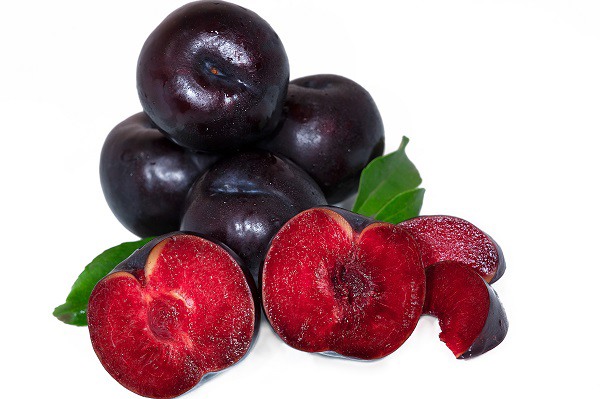 Ebony Rose interspecific plum, harvested just after New Year
Ebony Rose interspecific plum, harvested just after New Year
“Icon Fruit sent interspecific plums to the US this past season, which has a steri protocol of 30 days at -0.5°C, and the shipment was highly successful. Since interspecific plums were developed in the USA, the product is known there - it gives us opportunity not only to develop a new market but also to take volumes away from Europe and to there relieve the pressure.”
He continues: “When China opens for South African plums, then we are well away – they get these plums from the USA, so they know it already.”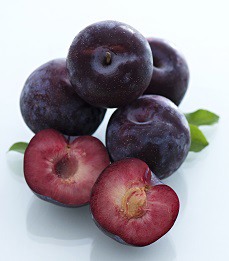 He maintains that the South African plum industry has to replace the old generation plums with superior cultivars with better eating quality and more cachet in the market.
He maintains that the South African plum industry has to replace the old generation plums with superior cultivars with better eating quality and more cachet in the market.
Right: Festival Red
Exports of IS plums top over a million cartons
Cape Five Exports has been awarded the second license to export IS plums; Icon Fruit exported well over a million cartons of IS plums last year.
“Here is a product that gives hope to the plum industry,” Jannie puts forth. “We would like to have it planted much more widely. Some of the cultivars have marketing restrictions, but others don’t, and that offers an opportunity for all farmers to plant it.”
Three red fleshed cultivars open the season
The interspecific season starts with the red fleshed Ruby Dawn in early December. Quite a bit of Ruby Dawn have been planted, demand driven by the fact that other plums this early are smaller with lower sugar levels.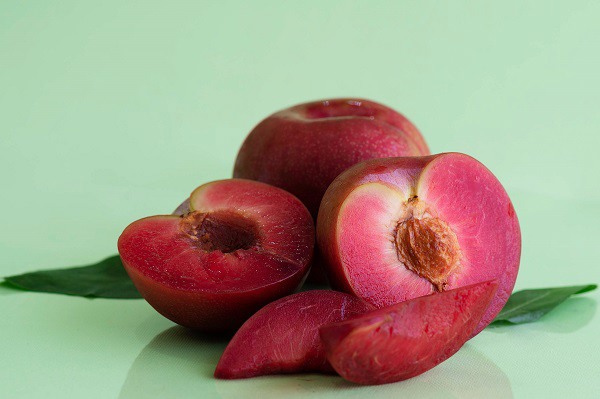 Ruby Dawn: "definitely one of our winners" (photos supplied by the Custom Plum Company)
Ruby Dawn: "definitely one of our winners" (photos supplied by the Custom Plum Company)
“You want to kick off the season with a product that can compete with the last Northern Hemisphere stonefruit and in that respect, Ruby Dawn has been very successful, it’s definitely one of our winners. A lot more Ruby Dawn was planted during the past winter.”
The second red fleshed plum, Festival Red, crops before Christmas and the Custom Plum Company now offers it as an open cultivar.
Just after New Year it is followed by the third red fleshed IS plum, Ebony Rose, which has an unusually deep red colour, Jannie notes, and it too is an open cultivar.
“We kick off the season with three cultivars with red skin and red flesh: we have had the antioxidant levels of red fleshed plums tested at Stellenbosch University and the results show its levels are even higher than those of blueberries.”
Honeypunch is currently the last I/S plum with red flesh. “It falls in a relatively dead time, beginning January and mid-February when the bulk of South Africa plums are marketed. It is the only interspecific at that time, and it can go to the USA.”
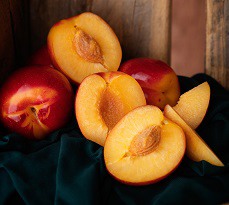 Yellow flesh winners
Yellow flesh winners
Other interspecific cultivars with which South African growers have become acquainted are Midnight Gold, Fall Fiesta and Autumn Treat (the latter only suitable for areas with high chilling units).
Right: Sunset Delight, among three new IS plums
Skin colour on these plums range from deep black to purple to a translucent red.
"The three new cultivars that are now coming out of the (at least) decades-long evaluation period, are all bicoloured plums, with a red and golden yellow undertone and crispy and sweet yellow flesh: Sonoma, Festiva and Sunset Delight," he says.
Sought-after cherry plums
“What excites us the most are the cherry plums, which are part cherry part plum,” Jannie says. Icon Fruit holds the license to export cherry plums.
“All of the top clients require cherry plums and returns can be double to triple that of conventional plums.”
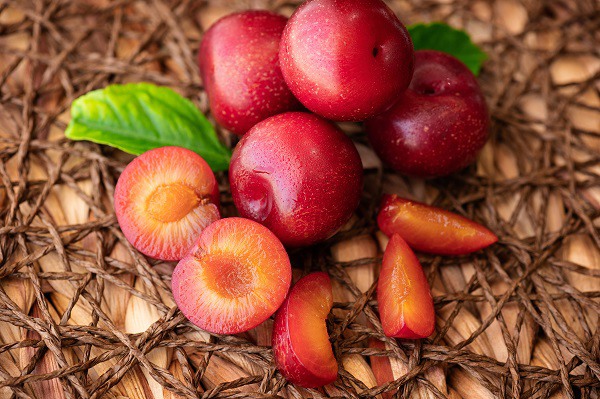
Genetics deliver final word on pollination compatibility
Jannie explains that using technology that has only become available over the past few years, independent cultivar evaluator Provar tests the S alleles of plum cultivars to nail the answer to what has until recently been a guessing game: the degree of compatibility between cultivars.
They still recommend the stalwart Harry Pickstone cultivar as a pollinator for its bee-friendly flowers which keep the pollen for a long time.
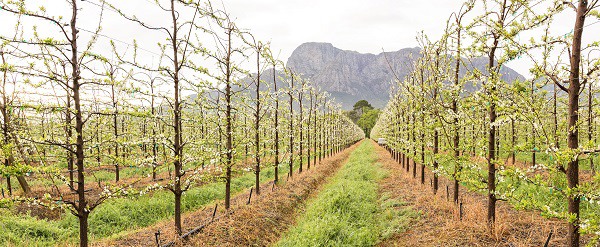
“We advise planting three different pollinators, especially these days with climate variations: if you have a difference in the weather one season and the cultivars in a block don’t flower simultaneously, fruit set is poor. Harry Pickstone, although an old variety, is still a fantastic pollinator and covers all the early flowers, and we advise a second and third pollinator to cover the mid and later flowers, so that if there’s a shift in flowering times you cover the whole flowering period.”
The bottom line, he argues, is that you want your main cultivar on that hectare to be profitable, you want the highest possible tonnages with the largest size and best sugar levels, even if that means that there is redundant fruit also raised in the orchard.
“We’ve started looking at two cultivars planted half and half, though it considerably complicates the management of spraying programmes as well as irrigation scheduling to have fruit with different harvesting periods within the same block."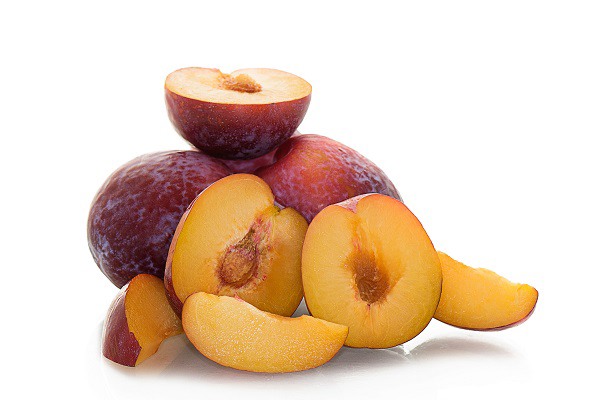 Autumn Treat
Autumn Treat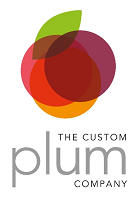 For more information:
For more information:
Jannie Marais
Custom Plum Company
Tel: +27 21 860 1800
Email: jannie@cpcsouthafrica.co.za
https://www.cpcsouthafrica.co.za/
